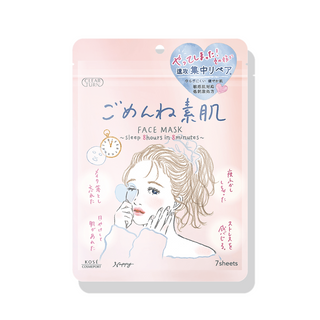In the heart of 1980s Tokyo, a musical genre emerged that would capture the essence of the city’s vibrant energy, optimism, and style. This genre, known as Tokyo City Pop, has not only stood the test of time but has also seen a massive resurgence in recent years, captivating the imaginations of listeners worldwide with its infectious grooves and unique atmosphere.
At Rei Cosmetics, we’re big fans of Tokyo City Pop, and we often incorporate its sounds into our social media content. For us, it’s more than just a genre—it perfectly represents the energy we want to convey through our brand: optimism, growth, and a seamless mix of both American and Japanese influences.
But what exactly is Tokyo City Pop, and why does it continue to capture the hearts of music lovers across the globe?
What is Tokyo City Pop?
Tokyo City Pop is a genre that blends elements of pop, jazz, funk, disco, and R&B, all wrapped in a smooth, synth-driven production. The sound reflects the fast-paced, urban culture of 1980s Tokyo, capturing the neon-lit, high-energy world of Japan’s economic boom. The music is cosmopolitan, easy-going, yet sophisticated—evoking images of Tokyo’s flashy nightlife, romantic moments under the city lights, and a lifestyle of success and leisure.
The genre’s rise during the 1980s was directly tied to Japan’s booming economy. As the city transformed with towering skyscrapers, billboards flashing with neon colors, and an increasing sense of wealth, Tokyo City Pop became the soundtrack to this new, glamorous way of life.
Interestingly, while City Pop is often associated with the 1980s, the term itself wasn’t used back then. It was a catch-all label for pop music that incorporated the evolving urban lifestyle and modern influences. Legendary artists like Tatsuro Yamashita, Mariya Takeuchi, Anri, and Yumi Matsutoya helped shape this genre, providing a soundtrack for a generation witnessing Tokyo's transformation into a global powerhouse.
The Resurgence of Tokyo City Pop
Despite fading from the mainstream in the 1990s, Tokyo City Pop has experienced a remarkable resurgence in the last decade. Thanks to platforms like YouTube and streaming services, listeners around the world have rediscovered these ‘80s gems. Fans outside Japan, especially those drawn to retro and vintage sounds, have embraced the genre for its timeless appeal.
This revival has created a global wave of interest in Tokyo City Pop, with new fans, artists, and even DJs embracing the genre and reimagining the classic ‘80s sound. You can hear its influence in modern genres like vaporwave, synthwave, and lo-fi, showing just how lasting and versatile the music is.
Diving into Tokyo City Pop
If you’re new to Tokyo City Pop and want to explore, here are a few essential albums and artists that define the genre:
- Tatsuro Yamashita – For You (1982)
- Mariya Takeuchi – Variety (1984)
- Anri – Timely!! (1983)
- Takako Mamiya – Love Trip (1982)
- Taeko Ohnuki – Sunshower (1977)
From here, you can dive into the deep catalog of lesser-known but equally incredible artists from the era, exploring the dreamy allure of City Pop even further.
One exciting trend we’ve noticed is the rise of listening bars in New York City, where patrons can enjoy Tokyo City Pop alongside a curated selection of other music. If you’re in NYC, make sure to check out these spots—they offer not only great drinks but also a fantastic musical atmosphere:
- Tokyo Record Bar – 127 Macdougal Street, New York, NY
- Honeycomb Hi-Fi Lounge – 74 – 5th Avenue, Brooklyn, NY
- NBetween Bar – 443 W. 15th Street, New York, NY
- Studio 151 – 151 Avenue C. (Second floor), New York, NY
Final Thoughts
Tokyo City Pop isn’t just a musical genre—it’s a cultural snapshot of a unique moment in time. It encapsulates the energy, excitement, and contradictions of 1980s Tokyo, offering a nostalgic escape to a glamorous, fast-paced world. As the genre continues to evolve and inspire, it reminds us of how music can transcend time and place, connecting us with the past in powerful, unexpected ways.
This is why Tokyo City Pop resonates so strongly with us at Rei Cosmetics, and we hope it does for you too. Whether you’re discovering it for the first time or revisiting the classics, we believe there’s something special about the genre that speaks to all of us.
Photo Credit: Takashi Miyazaki





